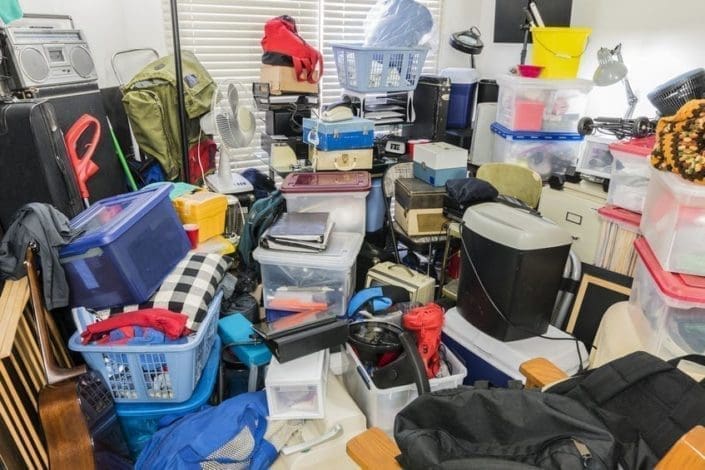
Hoarding is an anxiety disorder. A person with this disorder is unable to get rid of things, even things of no value. These could include newspaper clippings, old receipts, containers, even trash. A person diagnosed with this disorder goes to an extreme to save things. They are emotionally unable to throw away or donate items. This disorder can interfere with a person’s relationships at home and work. It can lead to unsafe conditions in their home. It can even be a fire hazard or a fall risk.
Hoarding is different from collecting. Collectors save things of value. This might include coins, antique cars, and other things they can sell or showcase. Hoarding disorder is more common in men than women. It can run in families. It is common in older adults over the age of 55. It can be mild or severe.
Symptoms of hoarding may include:
- Problems with getting rid of things you no longer need or use
- Thoughts of getting rid of things causes you excessive stress
- Thoughts that your home is ruined or unsafe because of the items you are keeping
- Thoughts that keeping things will keep you safe
You may also have hoarding disorder if your friends and family notice your problem, if your hoarding interferes with relationships, or if you disagree with others that you are hoarding.
Path to improved well being
Treating a hoarding disorder requires help from a mental health professional. They will want to meet on a regular basis. This will help your provider get to know you, how you cope, your life challenges, and other things.
Your mental health professional may ask you a series of questions, including:
- Do you have trouble getting rid of things (selling, recycling, or throwing away)?
- Do the things you keep prevent you from walking easily and safely through your home?
- How often do you add to the clutter in your home?
- Has hoarding behavior impacted your home, work, or relationships?
- How much distress does this behavior cause you?
People who are diagnosed with a hoarding disorder may not recognize it. They may not admit to it, even in the face of clutter.
There is no medicine to treat a hoarding disorder. Cognitive behavior therapy (talk therapy) is the common treatment.
Talk therapy teaches you to:
- Identify and change the thoughts or beliefs you associate with keeping things
- Ignore the urge to acquire more things
- Sort and declutter the things you have and decide which ones to discard
- Develop other coping methods
- Avoid social isolation
- Motivate yourself for improved emotional well-being
- Attend family and group gatherings
- Maintain regular support from your mental health provider
Supportive friends and family can make a difference. They are helpful in removing clutter.
Things to consider
Hoarding disorder can cause problems with relationships, your social life, and work. It can put your health and safety at risk, too. This exposes you to fires, tripping/falls, and health code violations. It also contributes to isolation and loneliness. You avoid having friends and family enter your home. It can interfere with daily tasks such as cooking and hygiene.
A hoarding disorder can contribute to indecisiveness, perfectionism, procrastination, disorganization, and distractibility.
Hoarding disorder is associated with other mental disorders. This includes depression, anxiety, attention deficit/hyperactivity, obsessive compulsive disorder, or substance abuse.
Questions to ask your doctor
- How much is too much clutter?
- How much therapy do I need for a hoarding disorder?
- How can I get a friend or family member to see a mental health professional?
- What should I do if I live with a person who has a hoarding disorder?
Resources
American Psychiatric Association: What is Hoarding Disorder?
National Institutes of Health: The Problem That Piles Up: When Hoarding is a Disorder
![]()
Copyright © American Academy of Family Physicians
This information provides a general overview and may not apply to everyone. Talk to your family doctor to find out if this information applies to you and to get more information on this subject.




